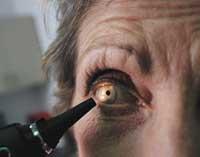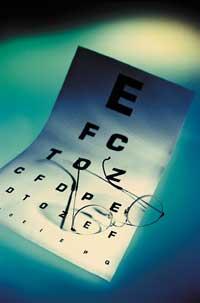Presbicia, tired view

From the age of 42 nobody gets rid of the almost physiological situation of tired sight, nor of those who have had a spectacular view throughout life. And the reason is stated above, that presbyopia is not a disease, but the consequence of age. And with age the eye loses sharpness or sharpness and it is increasingly difficult to read, sew and do things like that.
Why does it happen?
Over the years the ability to focus closely (40-45 years) is lost. The eye has two lenses: one is called a cornea and another is crystalline. Both allow us to focus objects or things to see things near or far.
The cornea is a fixed lens, but the concord capacity of the lens allows us to see it closely. Over time, however, the crystalline loses that capacity for concord. And that generates presbyopia.
What are the symptoms?
Presbyopia easy to detect and diagnose. We are aware that we have more and more difficulties to see well closely, without having to go to the doctor. We have to move things away to see better. Therefore, presbyopia is also known as “long arm syndrome” and it is common for the newspaper’s reading arms to be placed in that position, elongated. On the other hand, we increasingly need more light to read. Eye fatigue, headache, and other symptoms may appear.
What kind of glasses to choose?
If tired vision is diagnosed, the most appropriate steps should be taken to correct vision.
Pharmacy Glasses

These glasses are prepared with standard graduation that can be purchased directly at the pharmacy without having to carry out any kind of prior ophthalmological review or review. If the presbite has no problem of vision at a distance, you can use the pharmacy glasses without any problems, since they are very similar to those that are going to be done in the optical. But, for example, if you have some astigmatism, you will feel more comfortable with optical glasses, as in addition to tired eyes, you will correct that other error (astigmatism).
Crescent glasses
They are conventional enlargement glasses, but their peculiar shape allows them to look above them. They are very suitable for those who have no other visual problems.
Bifocal glasses
Thanks to these glasses you can see well up close (using the bottom of the lens) and far (using the top). In this way, the distant and the nearby vision can be alternated and to achieve it just move the eyes down or up. However, it is inconvenient that the line that divides the lens glass into two is very spectacular, which happens aesthetically to more than one.
Progressive glasses
Its operation is very similar to the previous one, but there are other areas to use for intermediate distances between the top and bottom of the glass. In addition, this glass boundary line is less spectacular and aesthetically cleaner than the previous ones.
The same for the eye is to wear progressive or bifocal lenses, but the progressive ones are more comfortable because they allow an intermediate vision. At age 40, when we are still talking about a unique diopter, there are no intermediate vision problems, but if the issue is 2-3 diopters, there is a space or space between the nearby and distant views (and the progressive lens covers that area or space).
Progressive lenses

Contact lenses are a good option for people who care about their appearance and manage to adapt to them. And it's not easy. In general, these lenses do not give good results. Why? Because they have a concentrated graduation and therefore the patient has to learn to see them with them and it is not so easy to adapt. On average, only one in ten people with presbyopia adapts well to the contact lenses.
New methods
In the future, in addition to glasses, other corrective methods may be used. A gel is currently being studied in the case of the lens. The lens is like a bag full of gelatin. In addition, there is a muscle that contracts and lengthens the lens and makes it thicker or thinner, allowing us to focus it closely. The intention of this line of research is to replace the natural crystalline with a gel that would have the same functions as the crystalline approximately.
When do I have to put the glasses?
Each person decides the right time to put the glasses: when he feels necessary. When we realize that it is difficult or boring to read from the usual distance. At first, it is enough to move a little away from newspapers or books. But with such distance we cannot see the small letters. It's time to start thinking about wearing glasses.
Does premature placement of glasses harm?
It is not harmful. But it is true that the eye gets used to the glasses and then it cannot work without them. With the glasses nearby we can see them or read them much better, but we can also get used to doing less effort and then the eye relaxes and can not work without glasses.
Buletina
Bidali zure helbide elektronikoa eta jaso asteroko buletina zure sarrera-ontzian











